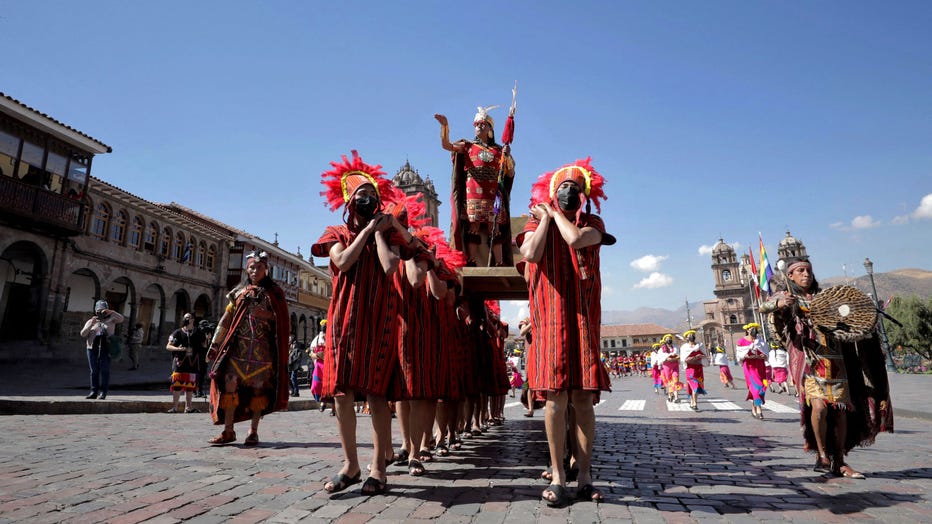Winter solstice 2023: When is it and what to know
NOAA predicts wet winter for South, warm North
NOAA's Climate Prediction Center released the 2023-2024 Winter outlook on Thursday. The outlook shows warmer temperatures in the North fueled by the El Nino climate pattern and possible drought relief for the South.
The first day of winter is coming soon.
For people who live in the Northern Hemisphere, the winter solstice marks the beginning of astronomical winter and the shortest day of the year.
Here’s everything you need to know about the winter solstice.
When is the winter solstice in 2023?

The sun rises behind the skyline of midtown Manhattan, Hudson Yards and the Empire State Building on the winter solstice in New York City on Demember 21, 2019 as seen from Kearny, New Jersey. (Photo by Gary Hershorn/Getty Images)
This year’s winter solstice occurs on Thursday, Dec. 21, 2023 at 10:27 p.m. Eastern time, according to the Almanac.
The Northern Hemisphere’s winter solstice always falls on December 21 or 22. In the Southern Hemisphere, the winter solstice is on June 20 or 21.
MORE: Geminid meteor shower peaks in mid-December thanks to this puzzling asteroid
Winter solstice is the start of astronomical winter, but meteorological winter begins three weeks earlier on Dec. 1. Meteorologists label winter as December through the end of February – the three coldest months of the year in the Northern Hemisphere.
What is the winter solstice?

An actor performs as the Inca Emperor, in the recreation of an ancient ritual during the Inti Raymi Festival in Cuzco, Peru on June 24, 2021, to celebrate the winter solstice (Photo by Jose Carlos ANGULO / AFP) (Photo by JOSE CARLOS ANGULO/AFP via Ge
The winter solstice marks the start of each hemisphere’s winter season.
Earth’s tilted axis makes it so that one half of the planet is pointed away from the sun and the other half is pointed towards it at the time of the solstice. That’s why the other half of Earth experiences summer while we experience winter.
MORE: December stargazing guide: Geminid meteors, Christmas full Moon and star-Moon pairings
"We often think of the winter solstice as an event that spans an entire calendar day, but the solstice actually lasts only a moment.
Specifically, it’s the exact moment when a hemisphere is tilted as far away from the Sun as it can be," the Almanac says.
Winter solstice, the shortest day of the year

A spectacular sunset on the Winter Solstice on December 21, 2020 in Berthoud, Colorado. (Photo by Helen H. Richardson/MediaNews Group/The Denver Post via Getty Images)
The winter solstice is the day with the fewest hours of sunlight throughout the year, the almanac says, making it the "shortest day" of the year.
"Thankfully, after we reach the winter solstice, the days begin to grow longer and longer again until we reach the summer solstice—the first day of summer and the longest day of the year," the periodical says.
Winter solstice celebrations

People look towards the sun as druids, pagans and revellers gather at Stonehenge, hoping to see the sun rise, as they take part in a winter solstice ceremony at the ancient neolithic monument of Stonehenge near Amesbury on December 21, 2016 in Wiltsh
The darkest day of the year has been celebrated possibly as early as the Stone Age, according to History.com. Neolithic monuments in Scotland and Ireland, built around 3,000 B.C., are aligned with sunrise on the winter solstice.
Stonehenge, one of the world’s best-known prehistoric monuments located in Wiltshire, England, is oriented toward the winter solstice sunset — which may have been a place of December rituals for Stone Age people, History.com says.
FOX’s Kelly Hayes contributed to this report.

